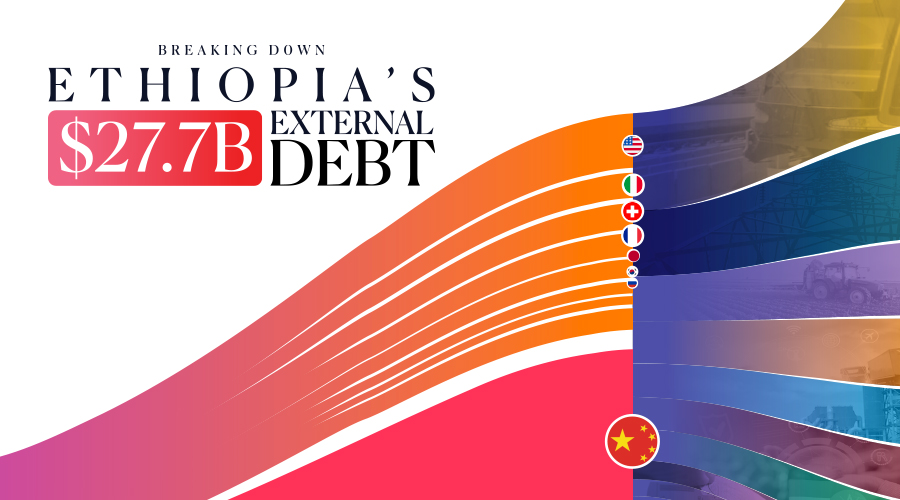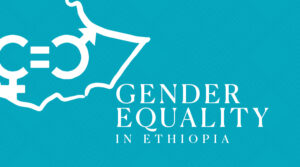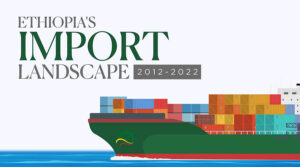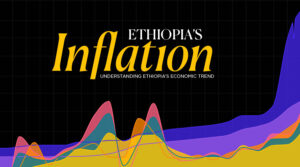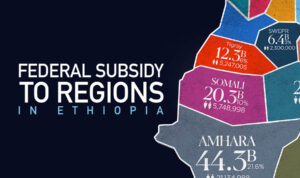A national debt is an ubiquitous reality across nations, transcending economic standings. However, understanding the intricate dynamics of how nations arrive at this juncture and the ensuing implications is paramount. In this exploration, we dissect Ethiopia’s external debt landscape, examining historical economic policies, global dynamics, and the country’s resilience strategies amidst a looming debt challenge.

Examining Ethiopia’s History of Loans and National Debt
Historical events shed light on Ethiopia’s longstanding borrowing practices. Notably, the United States played a pivotal role during the 1958–1975 Wollo–Tigray famine, acting as Ethiopia’s main creditor and providing crucial financial support during dire times. The subsequent assumption of power by the Derg regime in 1975 ushered in a new era, with China emerging as a substantial lender, setting the stage for transformative projects.
The post-famine period of 1975 witnessed an upswing in Ethiopia’s borrowing capacity, notably during the Ogaden war in 1977, where external financing became crucial, including a $100 million loan from the OPEC fund and private lenders.
The devastating 1983-85 famine prompted Ethiopia to secure $1.3 billion in financial aid, primarily from Italy and India. In the lead-up to the downfall of the Derg regime in 1990, an astonishing $5.8 billion in loans were secured within a single year, presumed to be used for internal conflicts. The newly established Federal Democratic Republic of Ethiopia (FDRE) government demonstrated fiscal responsibility in 1999 by paying off half of its external debt service, specifically settling Russia’s $5.8 billion debt.
Boston University’s Global Development Policy Center reports a significant contribution of $14 billion from China between 2001 and 2019, instrumental in projects like the Addis-Djibouti Railway and the Renaissance Dam to Addis Ababa Power Transmission Line.
Despite progress, certain outstanding debts, such as the $240 million owed to Libya since 2004, remain unresolved due to political upheavals. Notably, reforms initiated in 2018 and decisive actions in 2021 have led to positive signs in managing external debt. After 12 years of consistent growth since 2006, there has been a notable decrease, underscoring the impact of the government’s reform agenda.
The Debt Domino

Ethiopia faces a challenging economic landscape, compounded by internal and external factors, including COVID-19, reduced GDP growth, and internal conflicts. The high national debt, totaling USD 57.15 billion (50.1% of GDP) by September 2022, presents significant concerns.
Macro-economic Factors Influencing Ethiopia’s Debt Situation
It’s imperative to transition beyond the generic acknowledgment of national debt and explore the macroeconomic factors shaping Ethiopia’s fiscal scenario. Examining key indicators and their interplay with external debt reveals crucial insights:

Key Challenges and Impacts
- Interest Payment Burden
- Elevated debt levels lead to increased interest payments, diverting funds from critical areas like infrastructure, education, and healthcare.
- External Stressors Amplify Impact
- Global events, such as the conflict in Ukraine, affect commodity prices, intensifying the impact of high national debt on Ethiopia’s economy.
- Liquidity Challenges and Borrowing Dependency
- Continuous current account shortfalls force Ethiopia to heavily rely on borrowing (20% of the government’s budget).
- Liquidity risk arises due to a surge in external debt servicing to 22%, breaching the IMF’s recommended ceiling of 15%.
- Creditworthiness and Debt Distress
- High national debt influences creditworthiness, potentially leading to increased interest rates on new loans.
- Ethiopia classified as a high-risk country for debt distress by the IMF due to breaching recommended thresholds.
- Foreign Exchange Reserves and ODA Decline
- Foreign exchange reserves, critical for international transactions, have dwindled to USD 0.8 billion (covering less than three weeks of imports).
- Official Development Assistance (ODA) declined over 40%, from USD 4.7 billion in 2020 to USD 2.7 billion in 2022.
Immediate and Long-term Consequences
- Liquidity indicators surpass recommended limits, classifying Ethiopia as a high-risk debtor.
- Decreased foreign exchange availability, coupled with reduced ODA, further compounds Ethiopia’s economic challenges.
In navigating these complexities, strategic measures are imperative to address debt restructuring, enhance revenue generation, and secure sustainable economic growth for Ethiopia.
Let’s Talk Numbers: Unveiling Ethiopia’s Debt Landscape
Delving into Ethiopia’s financial landscape, the Minister of Finance’s recent debt bulletin unveils a substantial national debt of $63.2 billion. This sparks our curiosity about Ethiopia’s connections worldwide, ongoing debt discussions, and the economic hurdles it faces.
Within this massive debt, Ethiopia’s borrowings can be categorized into internal and external components:

Taking a closer look at Ethiopia’s external debt, we find diverse sources contributing to this financial tapestry:

“Paris Club countries” refer to a group of major creditor nations that negotiate together to address debt-related issues with debtor nations. “Non-Paris Club countries” are those creditors not part of this formal group, and the distinction is significant as negotiations and terms for debt relief or restructuring can vary between these groups, impacting the debtor nation’s economic conditions differently.
Fresh off the press on December 15, 2023, the Minister of Finance announced a potential delay in loan payments. This aligns with a global commitment to fair debt treatment, and Ethiopia informed its Euro bond investors about the possibility of delayed payments during a virtual global investors call. Dr. Eyob Tekalign, the State Minister of MoF, explained that this delay is part of a policy to implement a common framework for debt treatment, treating all lenders equally. Although this was widely misunderstood nationally, Ethiopia will have to adhere to this G20 Common Framework guideline if it seeks any form of debt treatment.
A $1 billion Eurobond initiated in 2014 adds complexity to the financial landscape. This bond, strategically managed by JP Morgan and Deutsche Bank, was designed to protect Ethiopia from currency risks and provide access to stable dollars. Its service rate fluctuates between 6.6% and 6.7%.
On the home front, Ethiopia’s total debt by September 30, 2023, stands at ETB 1,957,889.73 million, showing a 2.23% increase. Notably, state-owned enterprises (SOEs) hold 39.16% of this debt, with the federal government responsible for the remainder 60.8%.
Contextualizing Ethiopia’s Debt: Regional and Global Perspectives
Amidst the global norm of national debt, it becomes imperative to contextualize Ethiopia’s debt situation by drawing comparisons with its regional counterparts. A notable backdrop is Somalia’s recent attainment of the Completion Point under the Heavily Indebted Poor Countries (HIPC) Initiative, signifying a stark contrast and highlighting the diverse economic landscapes within the region.
Global events, such as the recent decisions by the Federal Reserve on interest rates and the ongoing Ukraine-Russia conflict, necessitate a nuanced analysis. It is crucial to comprehend how these external dynamics reverberate within Ethiopia’s economic terrain, forming the basis for informed and proactive risk management.
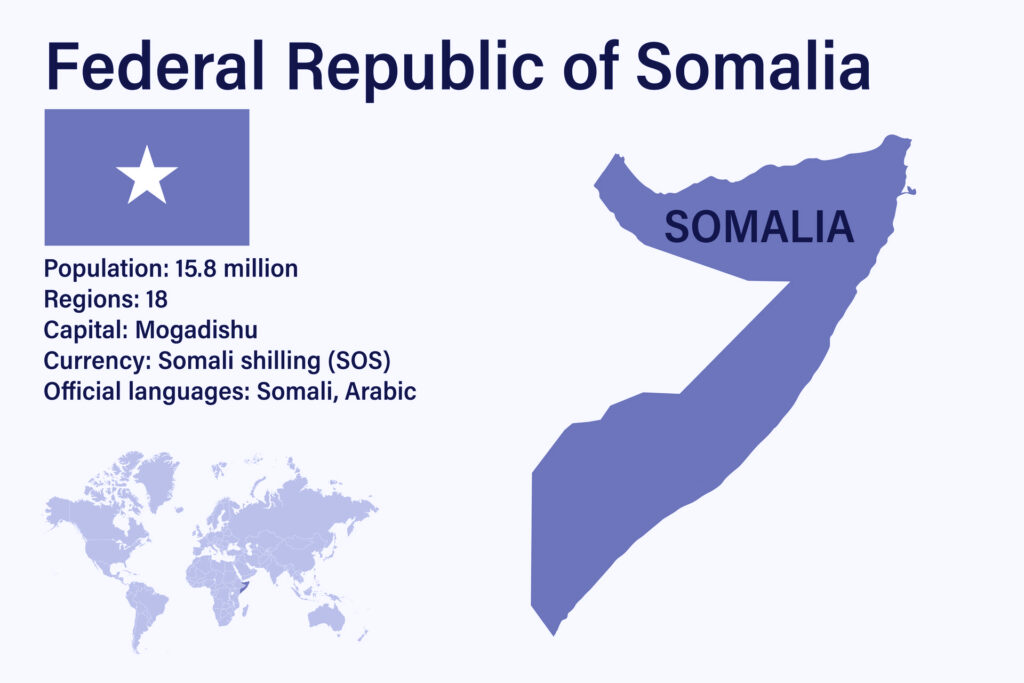
The total external debt stock of Somalia, as reported by the World Bank in 2022, is approximately $4.1 billion.
An illustrative example is Somalia’s recent announcement of receiving US$4.5 billion in debt relief through the HIPC Initiative. The Executive Boards of the International Monetary Fund (IMF) and the World Bank’s International Development Association (IDA) have approved this initiative for Somalia. This debt relief is a monumental development, reducing Somalia’s external debt from 64 percent of GDP in 2018 to less than 6 percent of GDP by the end of 2023. The approval underscores the impact of sustained policy efforts and reform implementations, even in the face of challenges such as the global COVID-19 pandemic, climatic shocks, and security risks.
Understanding such regional developments and their implications provides a valuable lens through which Ethiopia’s debt scenario can be comprehensively analysed.
Strategic Shifts: Political, Financial, and Global Alignments
Highlighting the impact of political shifts on investor confidence and economic stability is imperative. The UAE’s emergence as an ally during Ethiopia’s 2018 political shift underscores the intricate interplay between politics and fiscal dynamics.
The government’s cessation of commercial loans, coupled with recent financial discussions in Paris, adds layers of complexity. Acknowledging these shifts and aligning Ethiopia’s financial strategies with evolving global frameworks for fair debt treatment gives the whole picture.
Ethiopia’s strategic move to join BRICS and secure a debt suspension deal with China signifies diplomatic and economic acumen. Recommending continued collaboration for sustainable debt management underscores the importance of global partnerships.
Analyzing Ethiopia’s economic resilience amidst challenges such as its suspension from AGOA necessitates strategic recalibration. The Lemat Initiative, the wheat revolution focused on diversifying exports, and the promotion of tourism underscore Ethiopia’s commitment to economic adaptability.
Where Do We Go from Here?
In navigating its numerous challenges, Ethiopia remains poised to chart a course towards sustainable debt management. This journey involves meticulous restructuring, active engagement with creditors, and the implementation of robust fiscal management strategies.
Ethiopia’s growth impediments can be traced to an underutilization of its most significant strength – the interaction between private sector participation and strategic government interventions. While debates often oversimplify the government’s role, Ethiopia’s forward-looking 10-year strategic development plan (2021-2030) astutely recognizes the necessity of a private sector-led approach strategically complemented by targeted government involvement in key projects.
Evident successes, such as the impactful wheat and ‘lemat’ programs, showcase Ethiopia’s proactive approach to tackling domestic challenges head-on. Strategic investments in tourism and effective marketing present promising avenues for revenue generation. Overcoming obstacles to exports entails streamlining bureaucratic processes and discouraging non-productive sectors like real estate.
A pivotal focus on the manufacturing industry for export, tied with a deliberate emphasis on mining under sustained peace, is indispensable. Ensuring expertise permeates economic leadership, extending beyond the governmental level to include state-owned enterprises, is crucial for realizing ambitious growth objectives. Ethiopia’s trajectory toward economic revitalization necessitates a holistic strategy that leverages its inherent strengths, confronts challenges head-on, and cultivates an environment conducive to sustainable growth.
Disclaimer
- We utilized data from the Ministry of Finance to break down the sectors, complementing our analysis of Ethiopia’s external debt landscape. This sector breakdown adds granularity to our examination of the country’s economic dynamics and debt challenges.
- Lenders’ figures from the WB differ from the MoF’s reporting, with the inclusion of certain countries’ debt as External Commercial Bank credits affecting Bilateral and Private creditors’ numbers.
- The information presented here is derived from Ethiopia’s National Debt spanning from 1971 to 2023. The data on total external debt and its allocation to economic sectors is sourced from the Ministry of Finance 2022/2023 Third Quarter Debt Bulletin No.47, released in December 2023. The World Bank’s Economic Growth Dataset, last updated in October 2023, was utilized to specify each lender’s contribution. Please note that this data might not fully represent the entire year of 2023 as it excludes the fourth quarter. Additionally, fluctuations in exchange rates and other economic factors may impact the accuracy of the stated amounts.
- This is part of the $63.2 Billion Total Public Debt of Ethiopia as reported by the Ministry of Finance. The domestic debt, which includes government bonds, treasury bills, direct advances, and State-owned enterprises’ debt, amounts to a total of $35.4 billion. Additionally, external debt, derived from multilateral, bilateral, and private creditors, is valued at $27.7 billion.

